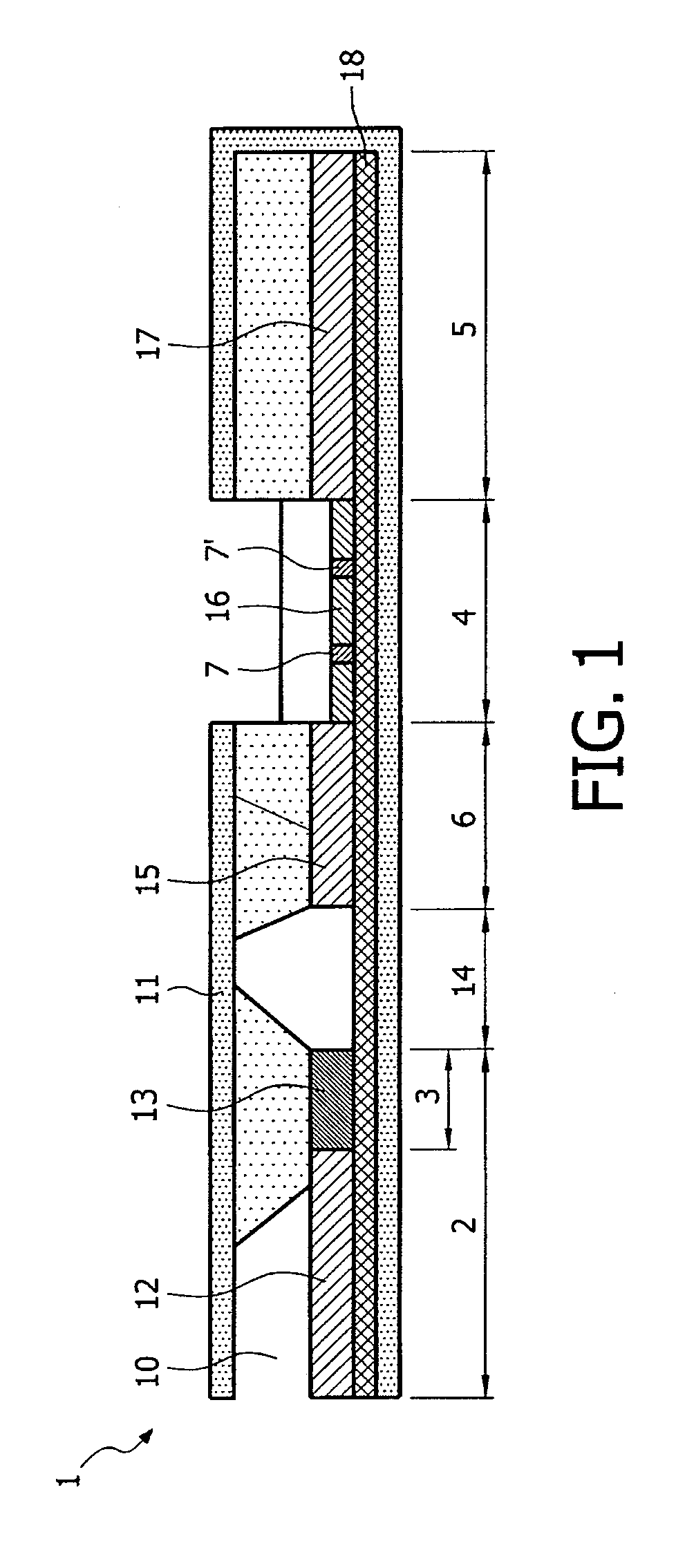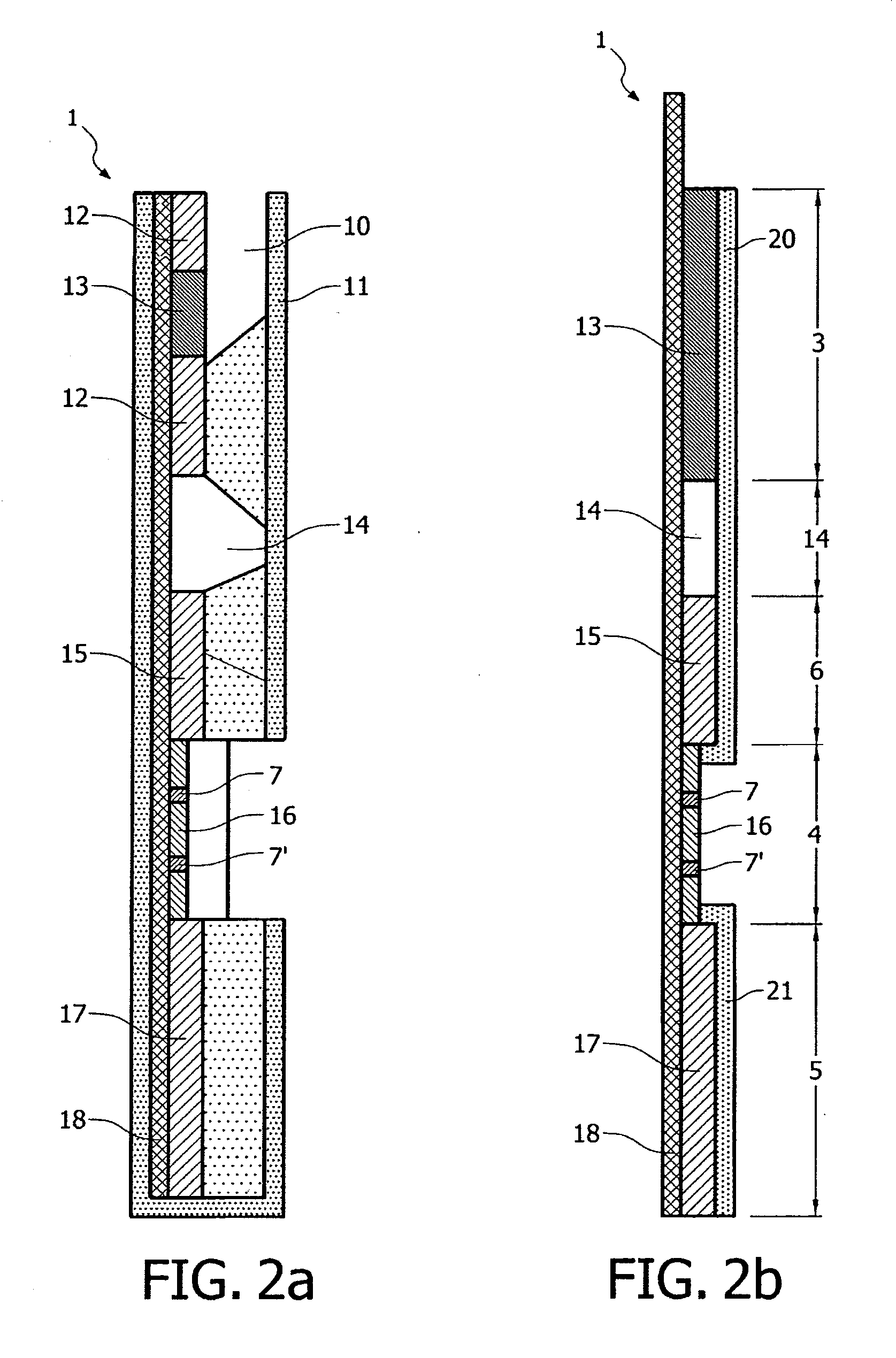Test device for rapid diagnostics
a test device and rapid diagnostic technology, applied in the direction of fluorescence/phosphorescence, instruments, analysis using chemical indicators, etc., can solve the problems of affecting the immunochromatographic process, rare sample application (such as feces) or sampling device,
- Summary
- Abstract
- Description
- Claims
- Application Information
AI Technical Summary
Benefits of technology
Problems solved by technology
Method used
Image
Examples
example 1
[0129]Detection of Rotavirus and Enteric Adenovirus 40141 (group F, strains 40 & 41)
Preparation of Polystyrene Microspheres
[0130]Polystyrene microspheres (Estapor) are washed in a specific washing buffer (Coris BioConcept). Microspheres are then centrifuged at 13,000 RPM for 5 to 10 minutes for recovering a 1 mL volume. Pellet is then resuspended in the activation buffer and mixed for one hour. Suspension is then washed twice in the washing buffer before to be finally resuspended in the coupling buffer after a final centrifugation.
Coupling of Antibodies to Non-Activated and Amino-Activated Polystyrene Microspheres
[0131]Coupling of the reagent to the polystyrene microspheres was performed essentially following the protocol provided by the manufacturer.
[0132]First coupling was performed with a mouse monoclonal antibody directed against Rotavirus group A antigen with blue NH2-polystyrene microspheres.
[0133]Second coupling was performed with non-activated red polystyrene microspheres wi...
example 2
[0143]Detection of Legionella pneumophila Urinary Antigen
Preparation of Colloidal Gold Particles
[0144]Colloidal gold particles of about 40 nm were purchased from a commercial source (Diagam).
Coupling of Antibodies to Colloidal Gold Particles
[0145]Coupling antibodies to colloidal gold particles is well known in the art. In this example, purified rabbit antibodies directed against Legionella pneumophila urinary antigen were used. Purified polyserum was reacted with a colloidal gold particles suspension that had been buffered with a potassium carbonate solution to obtain the desired pH. This pH is predetermined and may be different for each immunological reagent. The dilution of the purified polyserum to be used in the coupling process was defined in a preliminary experiment.
[0146]In this preliminary experiment, increasing dilutions of the polyserum were reacted for three minutes with the buffered colloidal gold particles and then sodium chloride was added to reach about 1% final conce...
PUM
| Property | Measurement | Unit |
|---|---|---|
| diameter | aaaaa | aaaaa |
| diameter | aaaaa | aaaaa |
| diameter | aaaaa | aaaaa |
Abstract
Description
Claims
Application Information
 Login to View More
Login to View More - R&D
- Intellectual Property
- Life Sciences
- Materials
- Tech Scout
- Unparalleled Data Quality
- Higher Quality Content
- 60% Fewer Hallucinations
Browse by: Latest US Patents, China's latest patents, Technical Efficacy Thesaurus, Application Domain, Technology Topic, Popular Technical Reports.
© 2025 PatSnap. All rights reserved.Legal|Privacy policy|Modern Slavery Act Transparency Statement|Sitemap|About US| Contact US: help@patsnap.com



